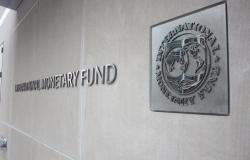How to Get the Biggest Bang for your IMF Buck

Nadia Daar provides a framework to assess and improve Special Drawing Rights reallocation schemes.
In my last blog, I laid out why so many have been calling for a significant new issuance of Special Drawing Rights (SDRs), a form of global currency that can be pumped into the global economy, with non-repayable allocations afforded to each International Monetary Fund (IMF) member country. Since February, things have progressed well and fairly undramatically on this subject. It is no longer a question of if we can agree on a new SDR issuance, but how to best use SDRs once they land in governments’ reserves.
Yet, there are questions for countries who are struggling with a whole host of financial challenges domestically, and badly need these SDRs, and there are questions for rich countries who don’t need (any or all) of their newly acquired SDRs. There are heated discussions on the latter, with the IMF tasked to present proposals to its Board of Governors early this summer.
First off, how much money are we talking about? The total pie that will (hopefully!) be approved this summer is $650 billion worth of SDRs. Because it will be doled out according to IMF member countries’ quotas, while Malawi will receive $190 million worth of SDRs, the US will get over $113 billion. That’s quite a difference! Here’s a snapshot view of what the distribution will look like for the G7 and a random selection of low- and middle-income countries (LICs and MICs):

In total, the $650bn SDR issuance will deliver almost $400bn in added reserves to the world’s richest economies, $230 billion to MICs, and just $21bn to LICs.

We can quickly see that the SDR issuance, while being massively helpful at this dire time, is not nearly enough to meet the $450bn that the IMF estimates LICs will need over the next 5 years to meet pandemic-related costs. This is why civil society has been calling for a figure closer to $3tn which would have given LICs $95bn – still not enough alone to recover from the pandemic but getting us a lot closer.
At this stage, we are where we are and $650bn is a really big deal. But in addition to cancelling debt and ramping up aid commitments, there is a clear rationale for rich countries to reallocate the share of SDRs they simply don’t need, in order to further target support to countries that do need them.
So, what should happen?
The injection of funds from SDRs could be used by rich countries in various ways; the most ideal scenario would be finding a mechanism to provide wide scale multilateral and bilateral debt cancellation with no conditions attached except ensuring citizen consultation and transparency around the use of the funds that would have otherwise gone to debt servicing. Creditors have so far been unwilling to budge on cancelling debts and so have resorted to mediocre (at best) solutions of temporarily suspending some debt payments. And countries continue to struggle – lower-income countries are spending $144mn a day on debt payments!
This scenario is free of repayment, free of economic conditionality, and is additional to what governments already have in their plans. And those are the three qualities of newly issued SDRs that make them so attractive as a financing option during this crisis. SDRs land in governments accounts and they are free to do what they wish with them and do not need to repay them. Unfortunately, we’re not hearing discussion of using SDRs for debt cancellation, not even through the IMF’s Containment Catastrophe and Relief Trust (CCRT), but it is worth considering the qualities of this scenario to help us assess, and improve where possible, reallocation schemes that are on the table. Let’s break it down:
- Debt-free financing: Ideally SDRs would be reallocated in as free a form as possible such that they are not adding unsustainably to countries’ debt burdens. This means finding ways to reallocate them through grants. If they can’t be donated per se, we should turn to the notion of a very long term and highly concessional loan.
- Additionality: Rich countries should use this opportunity to make additional commitments separate from what they would have already been prepared to make. i.e. if they were planning to make a contribution to a concessional facility at the IMF or a multilateral development bank anyway, they should not use their boosted SDR reserves to replace that contribution but rather to add to it. Simply put, this should not count towards the levels of aid rich countries were already planning to make, including towards their commitment to allocate 0.7% of their gross national income as international aid.
- No economic conditionality: SDRs should be reallocated in a way that isn’t tied to countries having to accept economic conditionality. Not only could countries be pushed into long periods of austerity as signs indicate are likely, these conditionality-based programs can take months, if not years, to negotiate, which is not what we’re going for when it comes to, what is still in many ways, “crisis financing”.
Who should access these funds and how should they be used? Let’s not waste the opportunity before us by excluding struggling Middle Income Countries (MICs) from the benefits of a reallocation scheme. MICs have persistently been left out of debt relief and concessional financing discussions despite facing extremely difficult circumstances.
Now let’s take this framework one step further and apply these principles to some options being discussed or even actively proposed already.
IMF’s Poverty Reduction and Growth Trust (PRGT): By all accounts, this is a highly likely place rich countries will reallocate at least a portion of their SDRs. The IMF’s PRGT offers budget support loans to LICs currently with zero interest. However, these are loans, not grants, and PRGT loans typically come with conditionality attached by design. The exception is the emergency financing facility within PRGT which is the Rapid Credit Facility (RCF) and which the IMF has made use of regularly during the pandemic. The PRGT, although providing zero interest loans, would not meet the criteria of “free of repayment” or “free of conditionality”. However, using the framework, donors can make tweaks to vastly improve this option through:
- Having the resources used to bolster the RCF specifically within PRGT - which comes without conditionality and lengthy negotiations. It would be important for the IMF’s Board to expand access to the RCF as many countries have maxed out their access to this vehicle already over the past year.
- Extending the loan repayment time (even temporarily) so as to expand concessionality further. Currently loans to the RCF have to be repaid within 10 years. The Board could temporarily extend repayment to 40 years.
Special Purpose Vehicle to support climate/vaccine efforts: There are loud murmurings about the IMF creating a new facility (or two) that would have similar arrangements as the PRGT, and that would be geared towards vaccine support and/or climate action. Some say it’s possible that an IMF program (with conditionality) may be needed to be in place as a criterion for accessing funds from this new vehicle. Putting aside questions on whether the IMF is an appropriate agency to host a facility for climate or vaccines, such a Special Purpose Vehicle would likely not meet the criteria of “free of repayment” or “free of conditionality”. However, using the framework, this Special Purpose Vehicle could come closer and has the benefit of being a new vehicle with rules yet to be designed, if:
- It could be designed with zero interest rates and lengthy repayment terms for example, 40 years (grants would be more ideal).
- Ensure MICs can access on concessional terms as well
- Access is not contingent on countries having an IMF program – aside from being a dangerous incentive, as it is indirectly requiring conditionality.
The point of the above exercise is to get policymakers – donors and IMF staff – to think as creatively as possible while designing and proposing reallocation schemes. Things don’t need to be black or white, good or bad. We need to get creative and be willing to temporarily change the rules if they don’t work for the current exceptional circumstances we find ourselves in.
For any option, there will be discussions around how to make sure governments spend the resources wisely and a temptation to earmark funds and impose conditionality. Let’s remember that governments need to be accountable, first and foremost, to their citizens. The best way to ensure resources are spent well to beat this pandemic, fight inequality and build a fairer more sustainable world post-pandemic, is by making sure lower income country governments are in the driver’s seat, spend the resources through their own systems rather than donor or IMF-imposed systems, and do so through proper consultation with citizens, guaranteeing transparency and accountability over the use of resources.
When we look back to the HPIC initiative established some 25 years ago, one of the valuable outcomes was the requirement for participating countries to have a development plan designed with broad-based participation in place. Far from perfect, this was still the opening of an important door, nonetheless. The new SDR allocation is another opportunity, let’s not regress but rather learn from and improve on the past.
Nadia Daar is Head of the Washington DC Office for Oxfam International and leads Oxfam’s policy and advocacy on the IMF and World Bank.
Image: Bruno Sanchez-Andrade Nuño via Flickr (CC BY 2.0)


